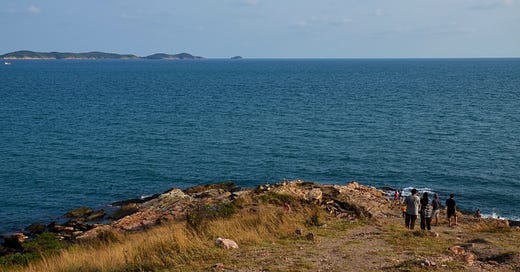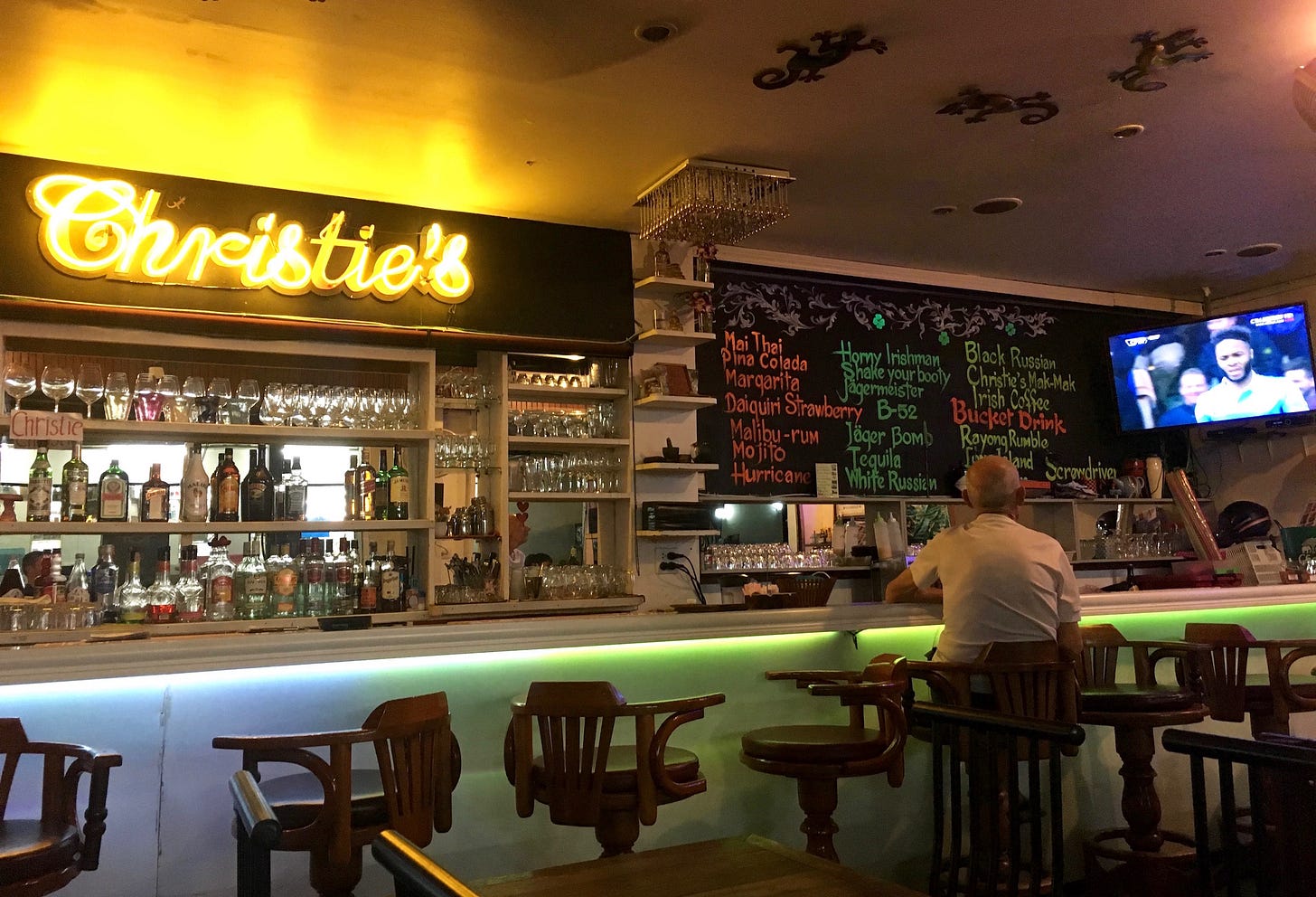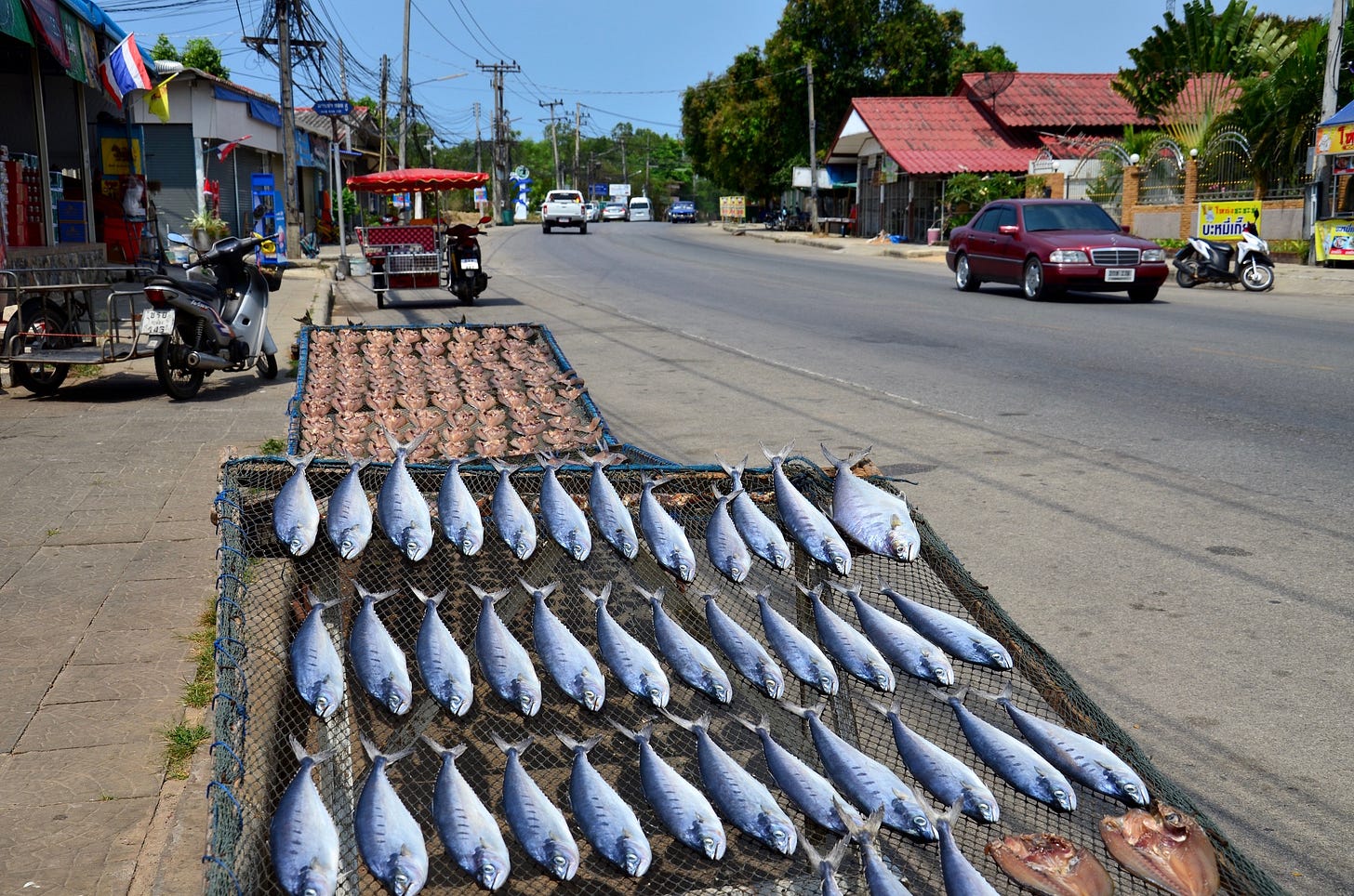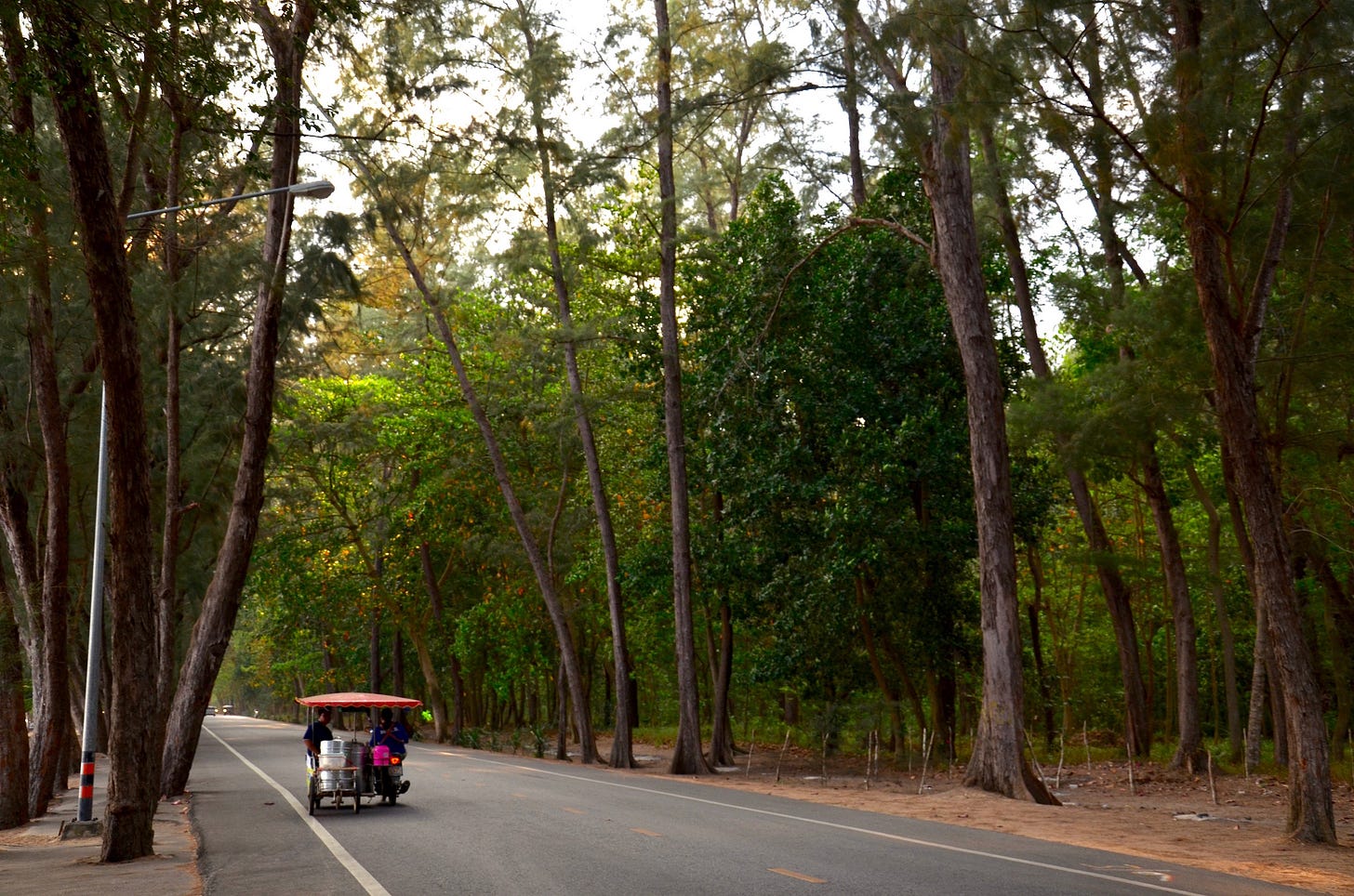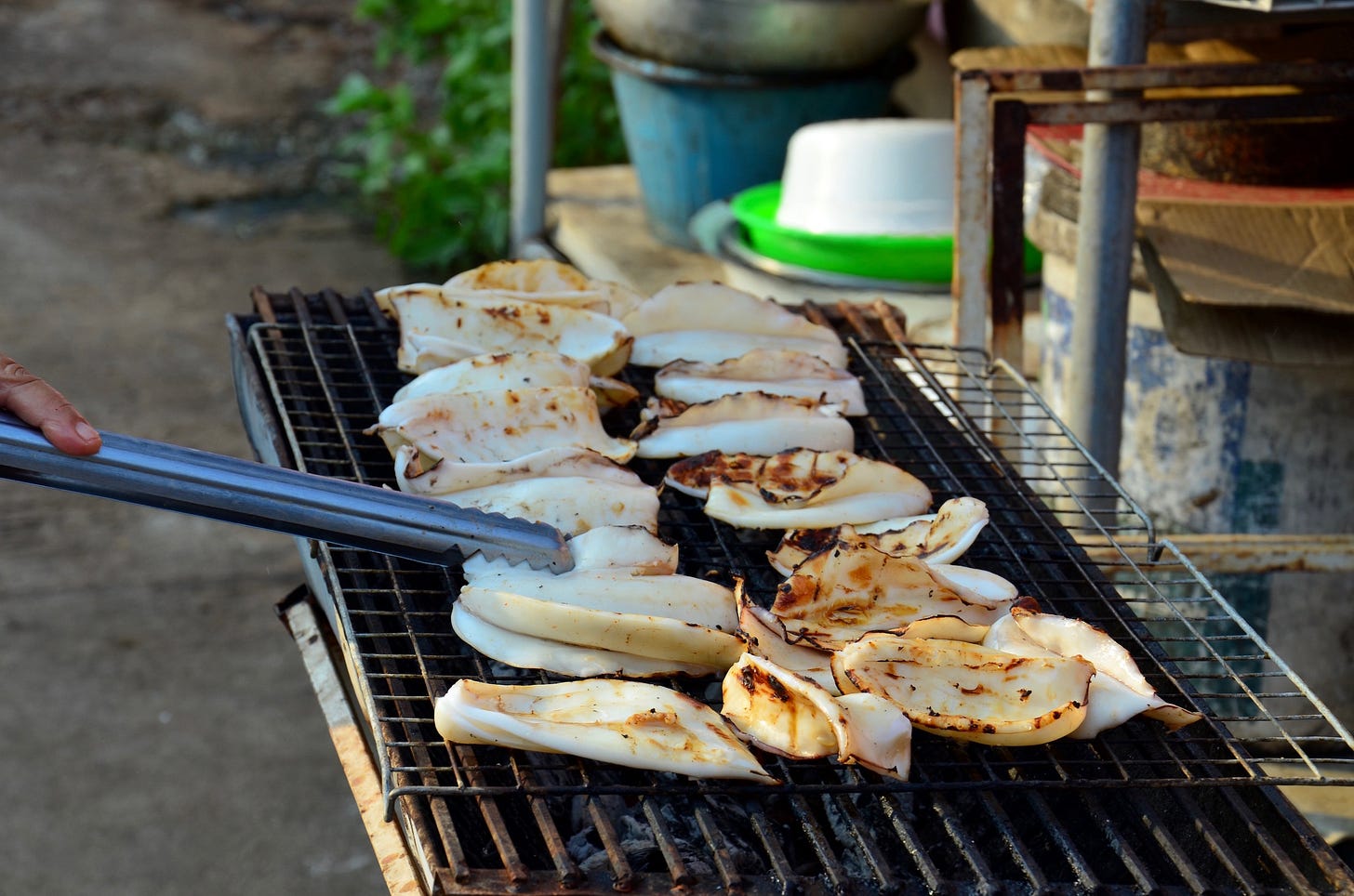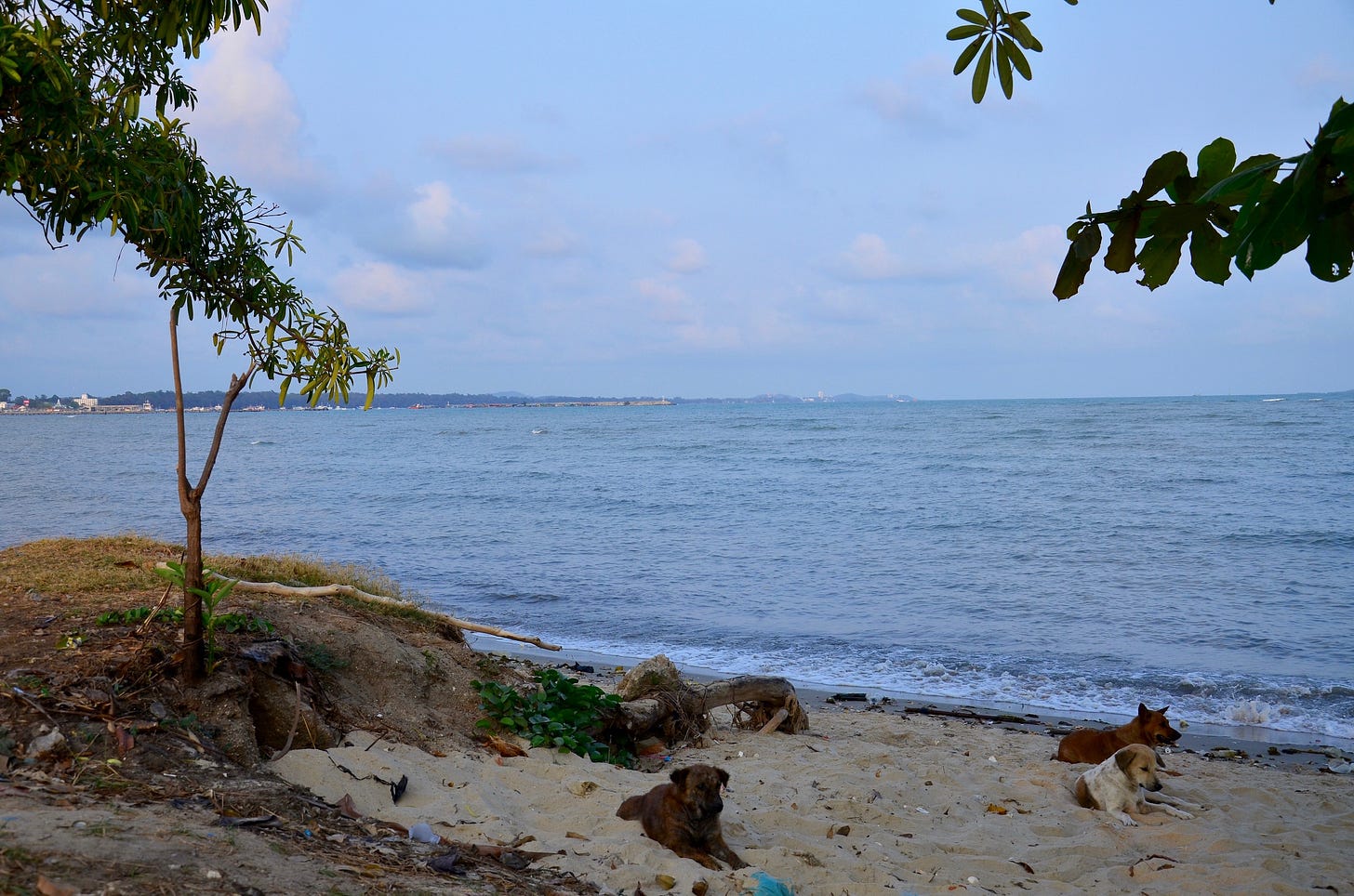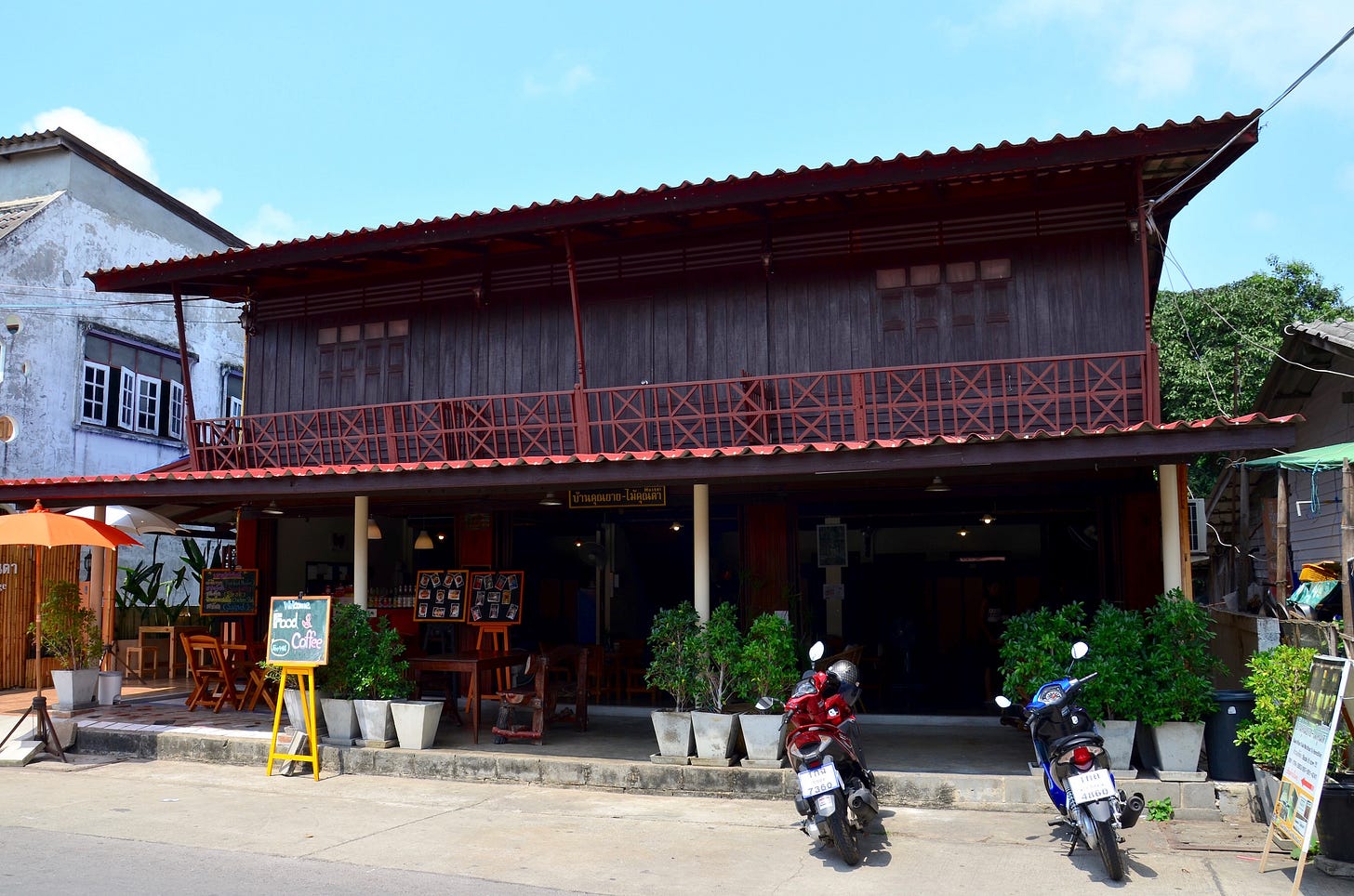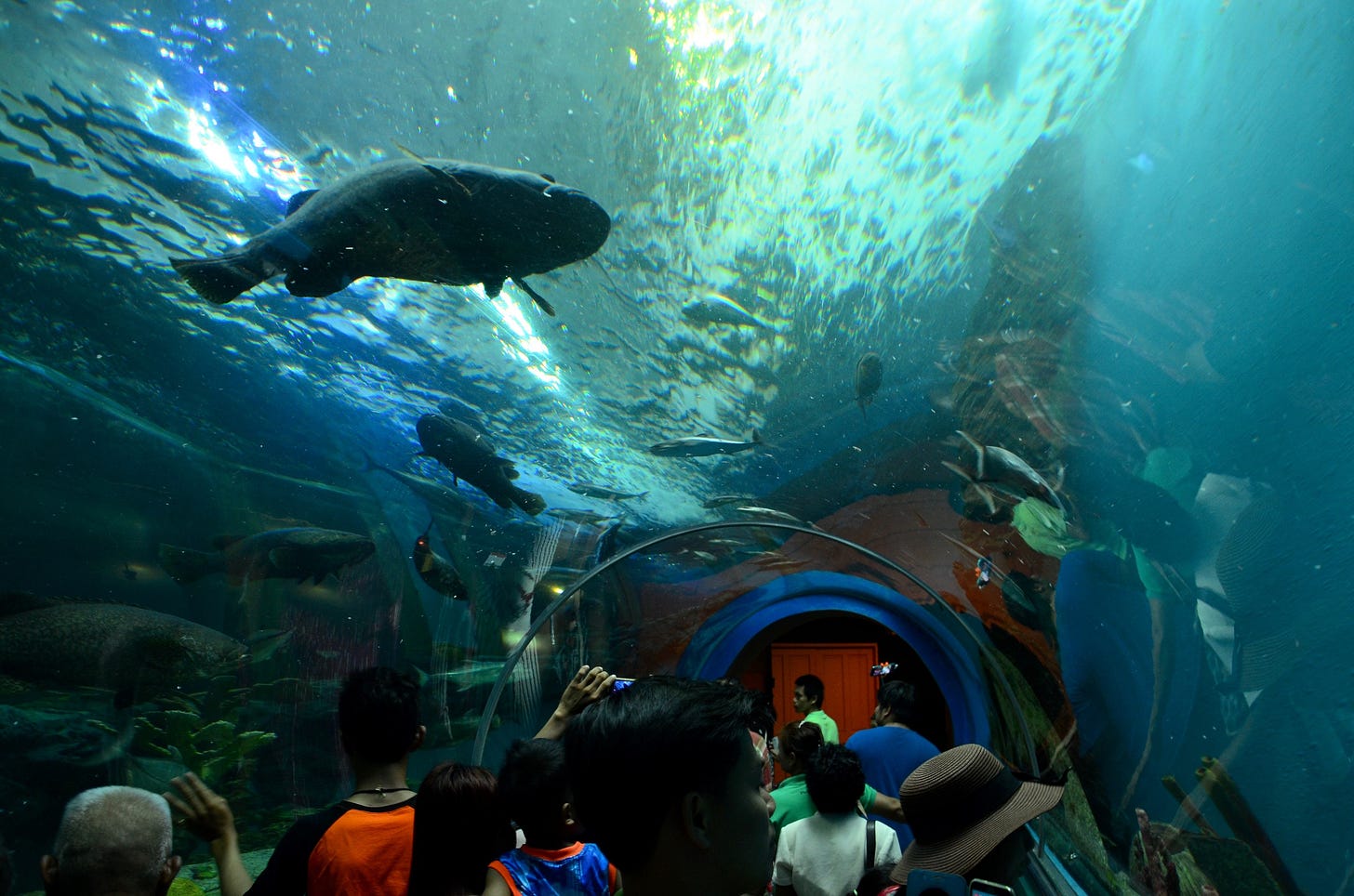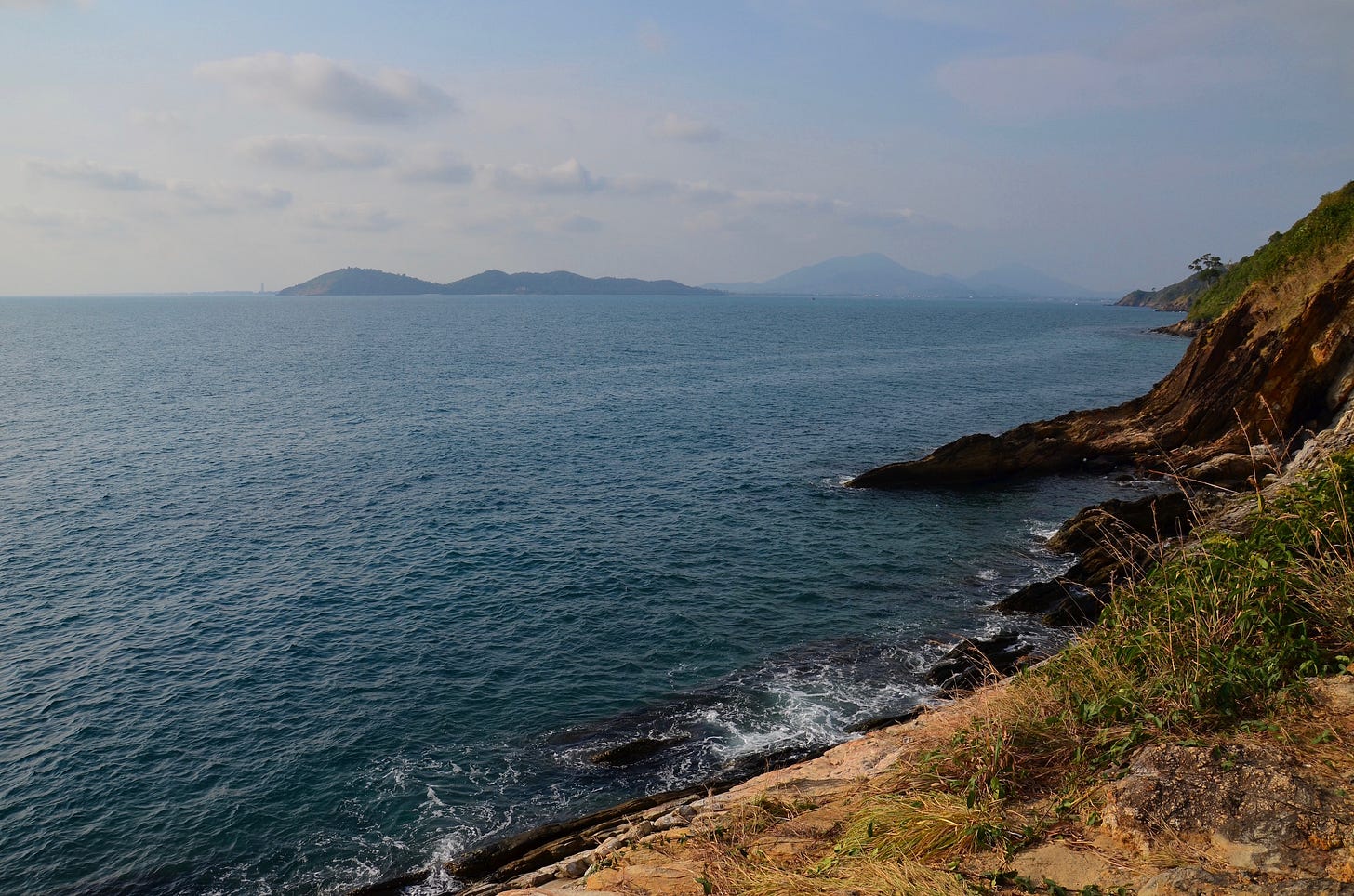Rayong: Gazing back at Ko Samet from Khao Laem Ya and beyond
Some of the areas between Ban Phe and Rayong town show how an extra day for the mainland might be a good idea after visiting Ko Samet. (Island Daze #25)
Last week I displayed how Ko Samet and other popular Thai islands have plenty of tranquil spots away from the crowds. Another aspect that travelers often overlook is how mainland coastal areas near the islands can also be rewarding, especially if you enjoy exploring beyond foreign-tourist areas. Near Ko Samet, the coast between Ban Phe and the capital of Rayong province is a good example.
“There is almost nothing there except for the piers,” a friend told me about the town of Ban Phe (pronounced ‘pay’) before my first trip to Ko Samet in 2012. At first glance, his advice seemed accurate as I walked the 300 meters from the bus stop to one of several piers servicing ferries to Ko Samet, located six km offshore.
At first I saw little more than an ugly road and stalls selling swimsuits and seashell decorations. Apart from the locals, everyone seemed to be heading straight for the island. “There must be something more to the mainland,” I thought to myself during the five-hour bus ride to Bangkok after that first stay on Ko Samet.

More than a few hours?
It’s not until my third trip to Ko Samet that I spend a couple of days covering Ban Phe and nearby spots, from Laem Mae Phim to Rayong’s old town, for Travelfish. I don’t expect much when checking into Christie’s, an old guesthouse with a popular bar fronting a seedy-looking alley near the piers. (Sadly, Christie’s has since closed permanently with the space turned into a Pizza Company outlet.)
My first afternoon in Ban Phe fails to uncover any legit reasons to spend a night, other than to meet the local characters who gather around Christie’s bar to watch Manchester United outplay Arsenal in “the footie.” I walk the main drag, collect the local transport info and check out some not-so-inspiring hotels. The highlight on that day, I suppose, is watching some fishing boats.
Nearly all travel guidebook writers end their time in Ban Phe after going only as far as I’ve gone during that first afternoon. They typically frame the town as merely a place with lodgings for anyone who happens to get stuck there before or after visiting Ko Samet. In contrast, Travelfish often affords its writers more wiggle room to seek out potentially worthwhile places that other writers overlook.
Having received apprehensive clearance from my boss at Travelfish to do dig a little deeper into the mainland coast of Rayong, I’m determined to see what the area has to offer beyond the boats and Premier League action at Christie’s.

Suan Son to the aquarium
The next morning I ride a motorbike east to nearby Hat Suan Son, where the namesake casuarina trees tower over both sides of the road. It’s one of many species of flora that blanket a roughly four square-km stretch of botanical gardens. Few overnight there, but some bird watchers enjoy camping amid the trees.
On the other side of the road, Suan Son Beach is known for the prawn, fish, squid, oyster and horseshoe crab sold by fisher families who cart their catches straight from boats to roadside stalls. Most of it is carried away on ice by restaurant owners and other locals, but there are some beach chairs for enjoying seafood off the grill. Prices are low and the nam jim dipping sauces kick with fresh chili.
Though not the most attractive beach in Rayong province, Hat Suan Son has plenty of shade and shallows to wade in while peering towards Nadan Pier and the nearby resorts that dot the heavily developed north coast of Ko Samet. The Ko Kudi group of islands are also in view further east. More mainland beaches and mangroves extend in that direction as well, but I’ll save them for another time.

I cut back west through Ban Phe and roll through a gate onto a narrow lane stacked with venerable wooden shophouses along with multiple fresh markets and several more fishing boat piers reaching over the sea. Grills full of snapper stuffed with lemongrass and caked in sea salt billow delicious scents into the air. I wheel around dogs and chattering shoppers here in the heart of Ban Phe.
Just west of this old-school Thai market strip I run into a sea breeze at Hat Ban Phe, an unkempt strip of sand facing back east over the town.
In nearby Pak Khlong I pause for coffee at Ban Khun Yai Mai Khun Ta, whose name means ‘Grandma Mai and Grandpa Ta’s House.’ Descendants of these original owners invite me upstairs to peep the 600-baht rooms in this roughly century-old former store and merchant’s home. In recent years it was graciously restored into a homestay with a cafe at ground level and contemporary-style rooms set out back around a flower garden. Kids play as grannies chat elsewhere in this languid village.
Pak Khlong lies a stone’s throw from Rayong Aquarium, which costs only 20 baht for adults (less for kids) and is my favorite of the aquariums I’ve visited in Thailand. Presented in English and Thai, exhibits cover the ancient history of the Thai Gulf along with the coral, dolphins and sharks found in the area. Kids love how they can almost touch the giant fish visible through the glass tunnel.
Climbing around Khao Laem Ya
A quick turn down a side lane takes me only two km south to the entrance of Khao Laem Ya, the ‘Mountain of Medicine Cape’ which joins Ko Samet as one of the two namesake landmarks of a national park founded in 1981. Unlike Ko Samet with its mamy resorts and other structures, the conical hill and granitic coastline at Khao Laem Ya are entirely cloaked in trees and wild grass.
Few foreign travelers give this mainland section of the national park a look. Whether Khao Laem Ya alone is worth the price of a 200-baht ticket (for foreign adults) to the park is debatable, but it’s certainly a scenic spot to enjoy a broad view of the nearby island that gets so much attention. Camping is allowed near Khao Laem Ya’s km-long beach, not far from an eatery and the park’s main headquarters.

I start with a stroll along a pier that zigzags out over the calm water. No other foreigners are seen, but this spot seems semi-popular with locals and Thai tourists. A few of them snap selfies of themselves waving to Ko Samet.

Further up the hill I find a hiking trail draped in coiling vines, part of a nearshore or littoral forest zone that’s been preserved by the park. Eventually it deposits me into tall grasses and wildflowers on Khao Laem Ya’s western slope.
I pick the prickly foliage from my clothes while stumbling down towards the coast and the far tip of Laem Ya. This bulky cape juts 300 meters out into the sea, as if pointing straight at the sparsely inhabited west coast of Ko Samet. Laem Ya also happens to be the southernmost spot in mainland Rayong province.

A handful of people congregate near the tip of Laem Ya, but overall the atmosphere is serene as I sit alone on a rock, enjoying the breeze and scenery. No other part of the mainland can be seen from this place; only the island and the water. As I soon learn, that does not mean that Khao Laem Ya is isolated.

One last stop at Mae Ramphueng
I wheel back out to the national park gate and hang a left, bumping into the eastern corner of Hat Mae Ramphueng in only two minutes. Families and groups of friends have come out to relax amid another large stand of pine-like casuarina trees. Uptempo Thai rock music claps from a pick-up truck’s speakers.
The soft khaki sand of Hat Mae Ramphueng extends for nearly 12 km, making it the longest contiguous beach on Thailand’s eastern Gulf. Its ostensible inclusion in Khao Laem Ya - Mu Ko Samet National Park kept development off the beachfront side of the road, but dozens of hotels and condos, including some big ones, were built on the inland side during the 1990s and 2000s. This is a spread out area that’s rundown in places, with many empty lots and a few buildings sitting abandoned.
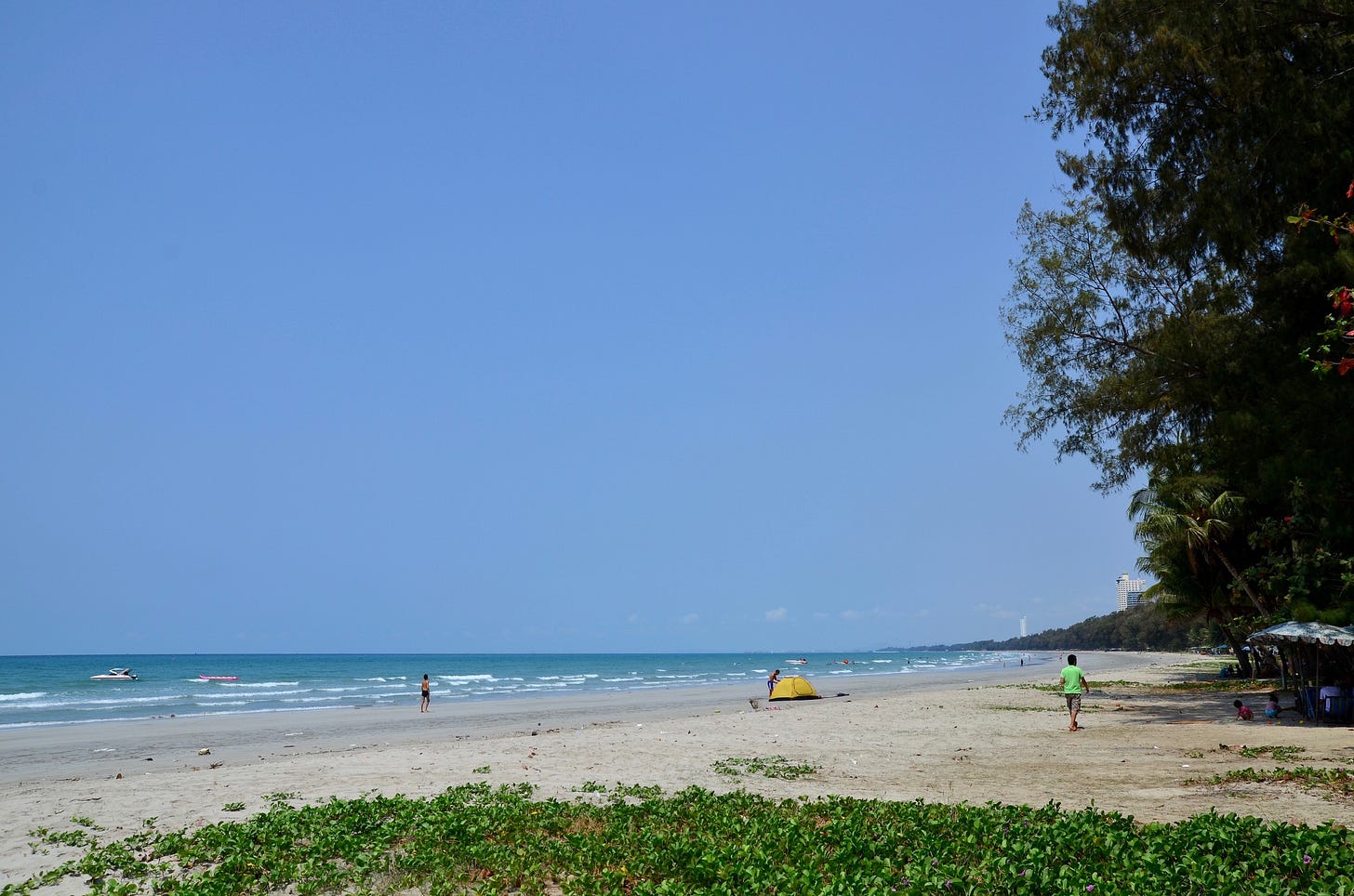
Hat Mae Ramphueng reaches almost all the way to the provincial capital, making it one of Rayong’s favorite relaxation spots. It hosts a fair amount of expat residents who dig the mix of activity and quietude with relatively easy access to places like Ko Samet and Pattaya. The beach road is terrific for cycling and jogging, though much of the sand that fronts the protective tree roots has been lost to erosion.
After riding all the way to the end of the beach road and back, I pull the bike off near the sleepy eastern end and stride out to the water for sunset. Kids jump in the surf as moms watch the toddlers and the teens try to avoid detection amid the trees. The soft peach light of another day’s end reflects over the waves. 🌴
Click here for a map pinpointing places mentioned in this article.
Thanks for reading Thai Island Times, an independent, reader-supported newsletter sharing the beauty, challenges and distinctive identities of Thai islands and coastal areas.

